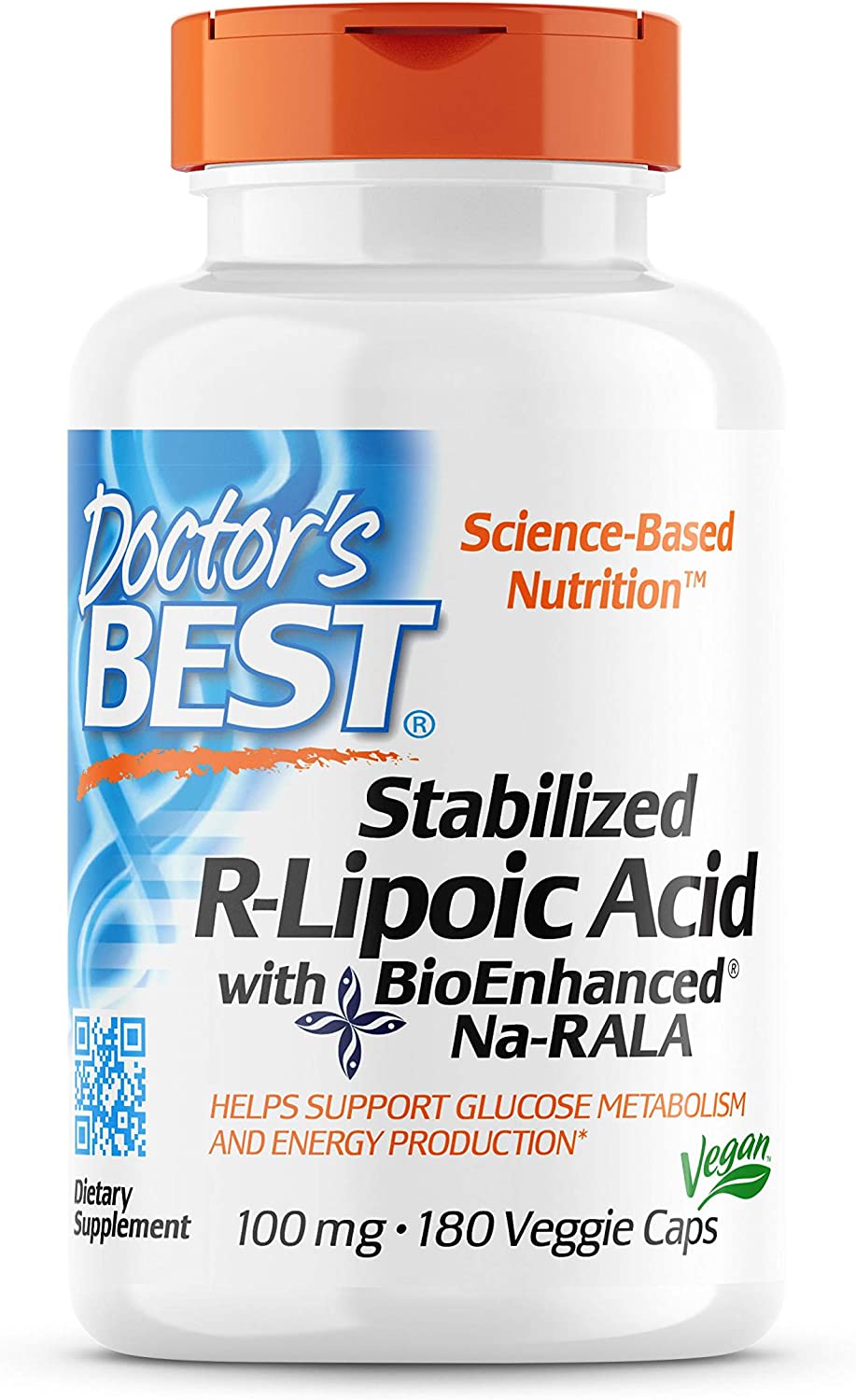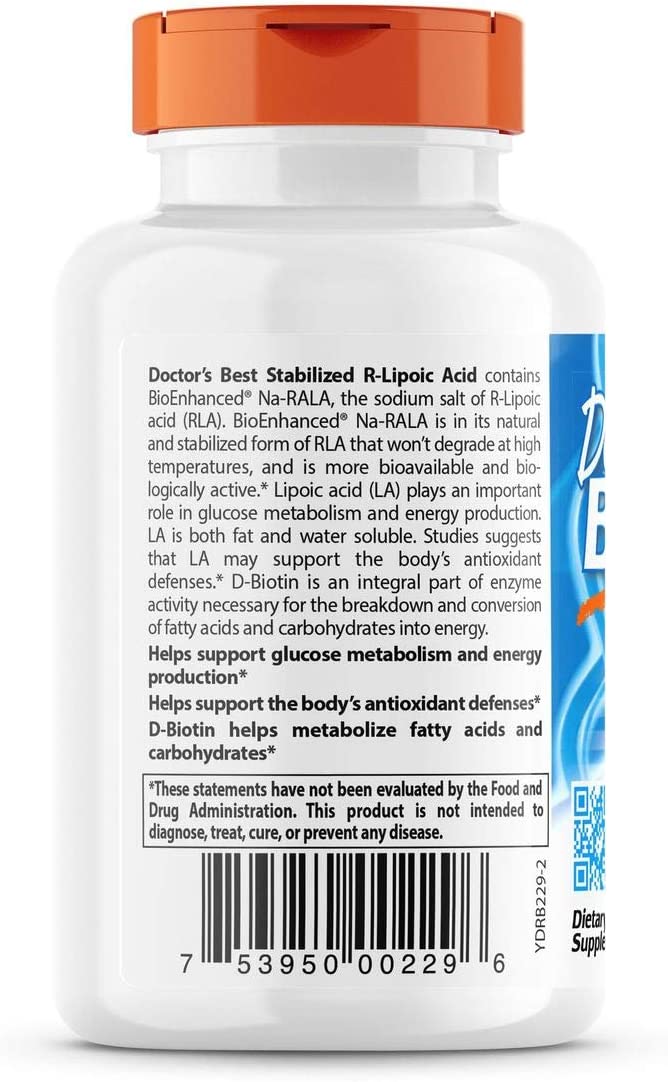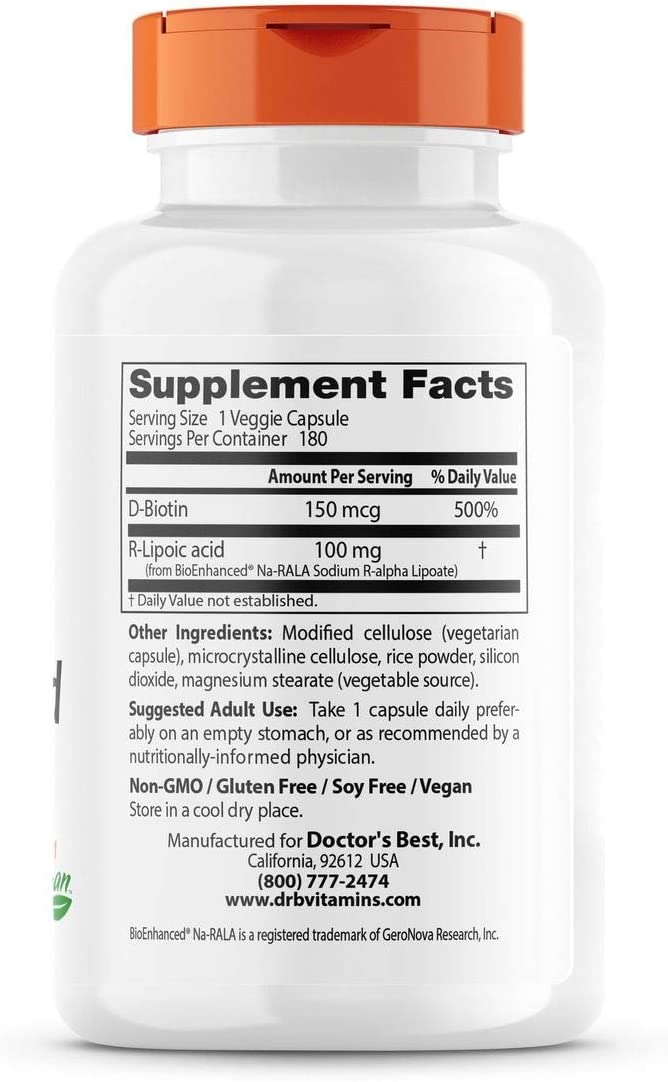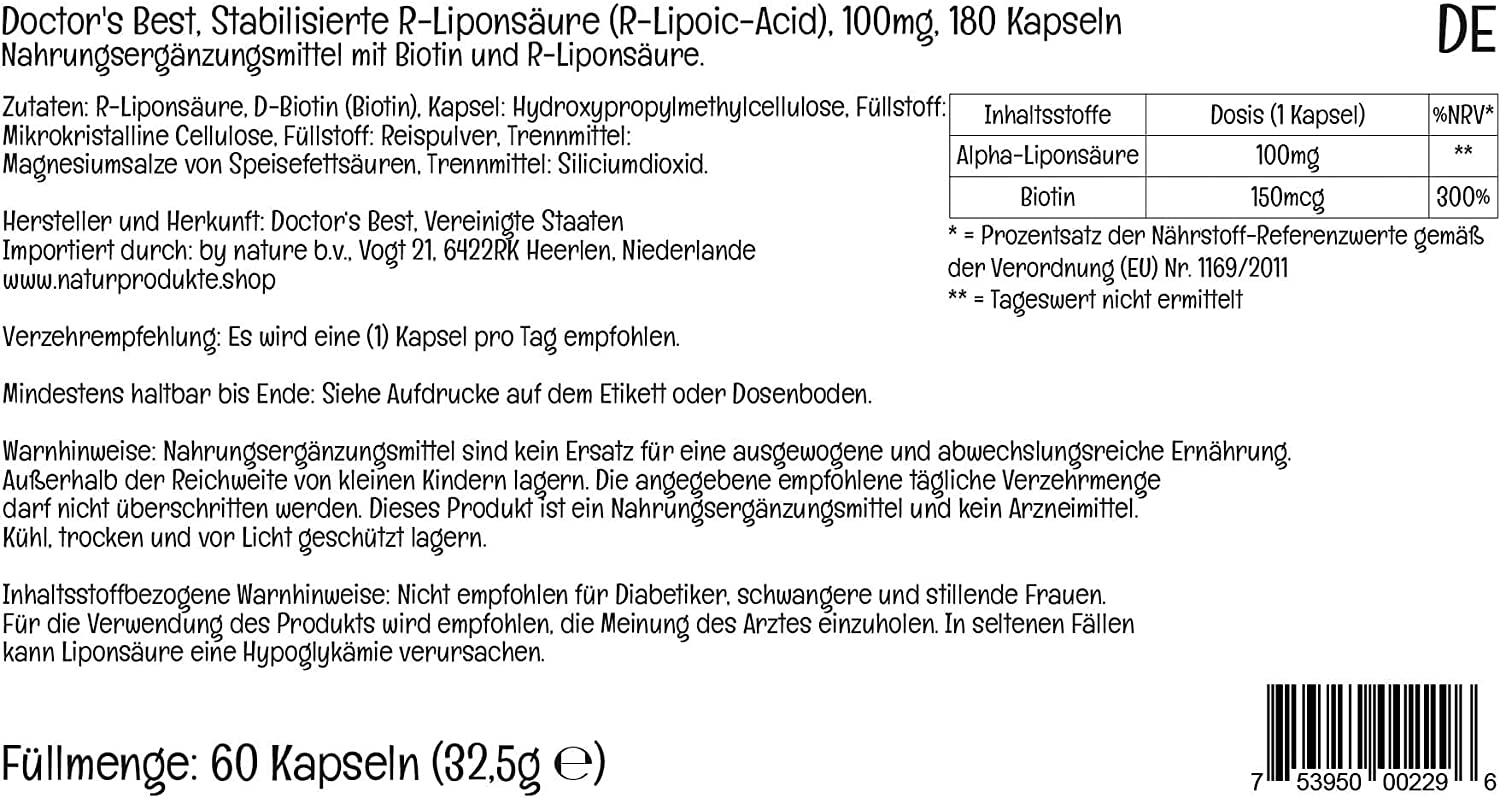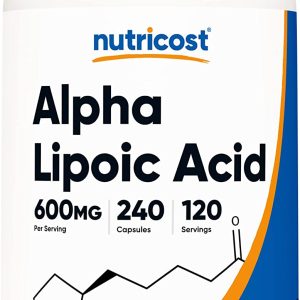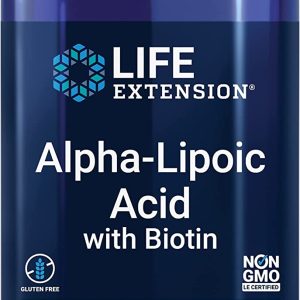Description
Supports the body’s defense against free radicals. Recycles antioxidant nutrients such as Vitamin C and Vitamin E. An ideal antioxidant would have the ability to quench a wide variety of free radicals, to support the functioning of other antioxidants, to bind or “chelate” metal ions that can generate free radicals, to function in watery and fatty environments, and to be present in tissues, cells, and extracellular spaces. Having exceeded these criteria, Lipoic Acid was termed the “universal antioxidant.” As a team, LA and DHLA come close to the ideal, for the following reasons: 1) LA is easily absorbed when consumed orally. 2) LA is readily converted to DHLA in various tissues. 3) As a pair, LA and DHLA neutralize superoxide, hydroxyl, peroxyl, and hypochlorus radicals. 4) LA and DHLA form stable complexes with metal ions such as iron, manganese, copper and zinc ions. 5) LA and DHLA scavenge free radicals in both fatty and watery environments. 6) DHLA recycles other important antioxidants.

